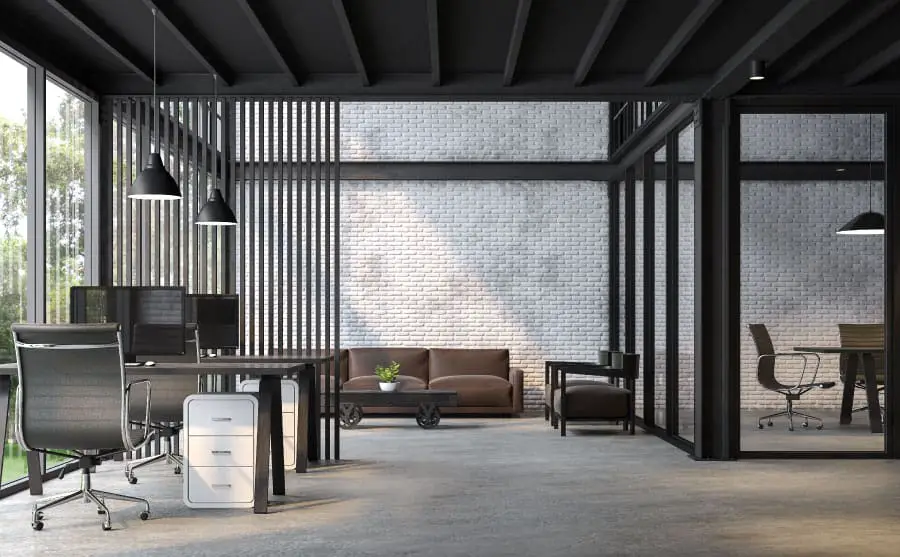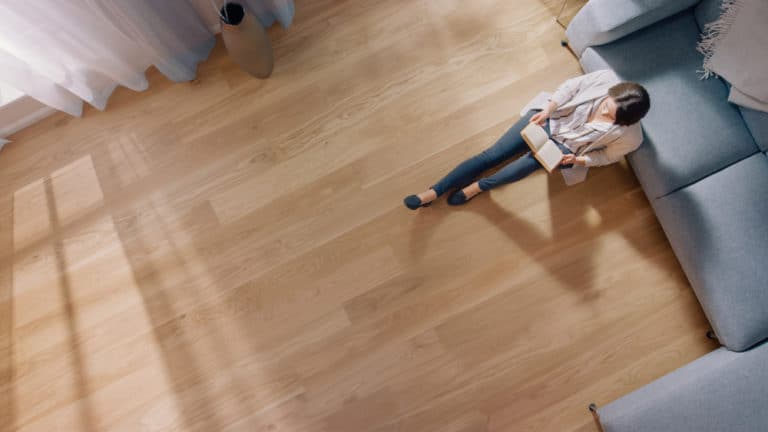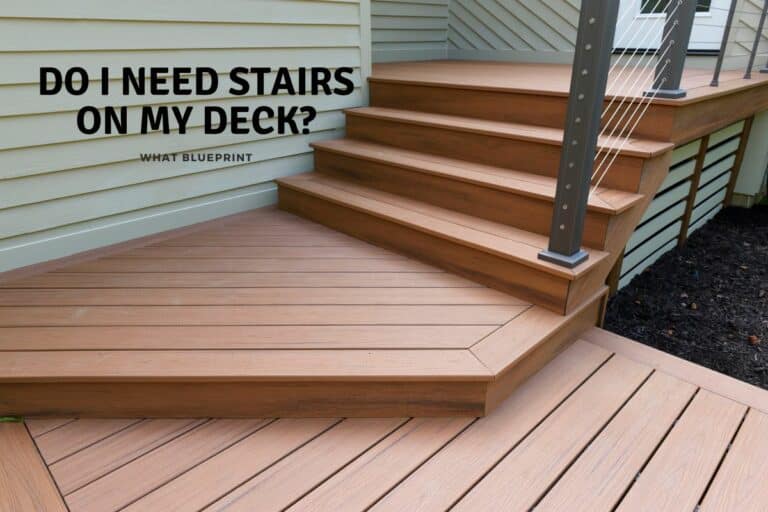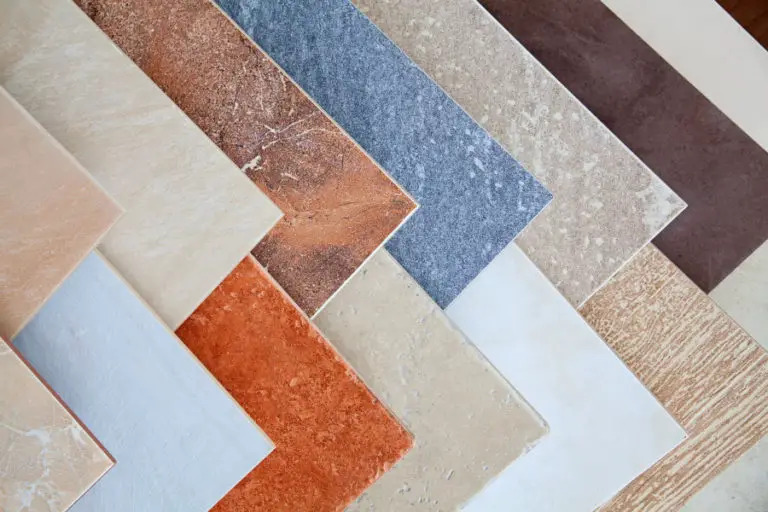What Flooring Can Go Over Stained Concrete?
Flooring is an essential finish for any building. It is the finish that people will be interacting with the most, and because of this, it will experience the most wear and tear.
To maximize efficiency during construction, the industry has been innovating towards finishes that are easy to apply and are durable. Stained concrete is one of those innovations, and the question now is if you can combine flooring and stained concrete to get the benefits from these finishes.
Unfortunately, it is not ideal for putting flooring over stained concrete. The purpose of stained concrete is to make a plain concrete finish more dynamic and customizable to fit in with the general aesthetic. Putting flooring over stained concrete will cover up its design. The flooring’s adhesives might not work well with the stained concrete, and adding any fasteners will end up damaging the concrete.
Read more if you want to learn about stained concrete, how it’s applied or if you want to learn about flooring in general.
What is stained concrete?
Stained concrete is a type of concrete finish used to change the concrete’s properties to give it a finished look. The concrete is stained with either an oil-based or water-based substance (aka concrete stain).
As with most finishes of this type, oil-based finishes tend to produce a thicker and shinier finish, while the water-based provide a more matte finish that is easier to work with and customize. They call it stained concrete because of the acidic mixture that seeps into the concrete and changes its composition.
Remember, concrete is made up of aggregates, which are composed of stones. Stone reacts to the acid in such a way that it changes its color. This is part of a natural phenomenon called weathering. The building industry took the concept of weathering and managed to find a way to “weather” the concrete to make it more aesthetically pleasing while still being usable.
How is concrete stained?
Since concrete is such a commonly used material in building construction because of how efficient, reliable, and easy to construct it is, the industry has developed ways to repurpose and serve other functions aside from just being a structural material.
Staining concrete is actually a two-part process, which is not that difficult to execute. It involves applying an acidic solution to the concrete and applying a stain designed to seep in and meld with the concrete.
The only difficulty that a construction worker might face when staining concrete would be if it were indoors. Since the acid solution is strong enough to repurpose concrete, its fumes might spread into the air.
There are certain acidic solutions for an indoor application. Nevertheless, it should be made sure that the area is well ventilated while the acid solution is being applied and that only people with safety gear are within its vicinity. This is especially important for small structures such as houses, in which the air can easily travel throughout the building.
For a quick chemistry refresher, a chemical reaction is the transformation of the molecules of a substance into something else. A chemical reaction is quite difficult to change or reverse, and for our purposes, this is of great benefit.
Durability, longevity, and maintenance are all important aspects, especially for floors, which is actually the building component that experiences the most activity, and this is where stained concrete excels at.
The difference between regular concrete and stained concrete
The main difference between a regular concrete finish and a stained concrete finish is that a stained concrete finish provides color and customization while regular concrete finishes provide a plain and uniform finish.
A regular concrete finish isn’t actually a smooth concrete slab, which is the structural component that concrete is used for. Instead, a concrete finish is a different layer of concrete applied on top of the slab.
You might wonder why they don’t smoothen out the slab instead, but you need to consider that not all concrete is created in the same way.
There are different mixtures and different conditions that give it different properties, and the mixtures for finishes, which need to be smooth and clean, require an entirely different mixture compared to the type of concrete used for structural loads.
For a quick refresher, concrete is made out of cement, aggregates, and stone. The properties of concrete depend on the type of materials used in the mixture and the conditions that it dries in.
When is stained concrete used?
Stained concrete is generally used to cover wide areas because of its cheap and easy installation. Generally, places that experience a lot of foot traffic would prefer to use stained concrete over other finishes because of its properties.
Stained concrete is easy to clean, it can hold its look (since this finish is a chemical reaction), and it can be customized to fit the needs of the space, considering how versatile it is.
It also goes without saying that stained concrete is only used on floors with a plain concrete finish. This allows for a uniform application of the concrete stain and ensures that the acidic solutions and the stain reach all floor areas.
Note that there is a difference between having a leveled floor compared to a flat floor. Leveled means that a surface is 180 degrees (horizontally leveled), while a flat floor indicates no distinct high/low points throughout the surface (uniformity).
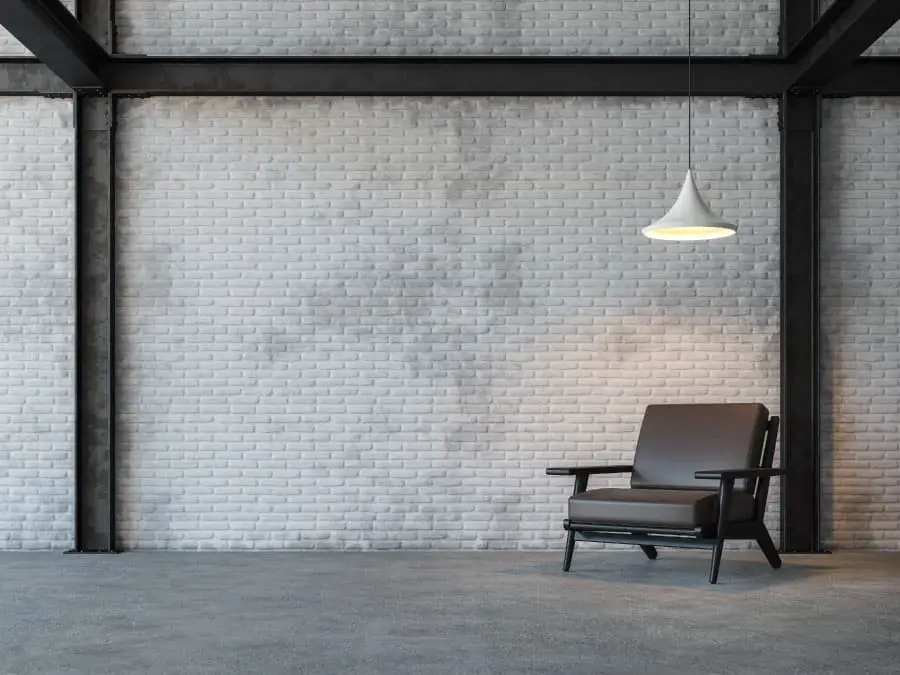
Staining concrete vs other finishes
The main benefit of stained concrete over other finishes is that stained concrete is a chemical reaction. It can only be changed or remodeled with the right chemicals. No other action can change the quality of its finish. Other finishes, such as paint, are usually composed of a layer that fades with weathering, moisture, and physical force.
Aside from this, stained concrete is actually very cheap compared to other finishes in terms of manpower and actual costing. How contractors measure flooring cost is based on the square meters that the flooring can cover and the price per unit.
It would take anywhere between $3 to $6 per square meter for stain concrete, while for a tile finish, it would take around $9 to $11 per square meter. Another thing to consider is that it takes a lot less time in terms of application, and there is less room for error in installing stained concrete over the flooring.
Another big benefit of stained concrete over other finishes is how fast and easy it is to apply. In comparison, flooring finishes usually have to be planned out first to figure out the most aesthetically pleasing and cost-efficient pattern. You also have to consider how labor intensity of installing flooring. For stained concrete, all you have to do is apply the acid and the stain.
Flooring
For our purposes, we’ll define flooring as the installation of any materials on top of a slab for aesthetic and utility purposes. Since flooring can be made out of any material and design, it is the most versatile type of finish that you can utilize.
Flooring is used as both a finish and as a utility. This normally depends on the function and purpose of the space and the designer’s priorities.
In terms of design, flooring can be used to indicate a change in space. This is done by having flooring that promotes or limit a certain activity. For example, some hotel rooms will have their rooms carpeted to make guests feel comfortable.
How it’s installed
Most floorings are usually installed with the use of adhesives. Adhesives don’t take up a lot of space, are durable, and can easily be removed. Floorings can also be installed using fasteners, depending on the material.
There is no general instruction on how you can install flooring, considering that it is such a wide category for different materials and finishes. What is established is that the flooring is installed based on the dimensions of a space. This means is that the contractor will look at the available floor area and adjust accordingly.
Usually, how they can do this is by arranging the flooring patterns in such a way that it would fit best into a space. This is so that the flooring, if it’s a pattern-type, can still maintain its uniformity while being as cost-effective and efficient as possible.
There are actually some installation techniques in which the flooring is arranged in certain ways that reduce the amount of material you need to carry up the same floor area. An example of this would be the diagonal arrangement of tiles, requiring fewer tiles to cover the same floor area.
Types of flooring
Technically any material can be used as flooring. It all really depends on the context and the needs of the space regarding what flooring will be used for it.
Flooring is categorized based on the properties of the material and how it would interact with that space. It is important that you use the right type of flooring for the right type of activity in your space.
Here is a list of typical types of flooring categories and a brief description of the properties of these categories:
| Type of Flooring | Description & Properties |
| Carpeting | Carpeting is composed of multiple fibers, which can be made out of cloth or other soft materials. Carpets are usually premade and are installed through either adhesives or fasteners, and any excess is cut to fit the floor area. |
| Wood | Wood flooring is versatile in that there are endless ways to cut them into shapes and arrange them into patterns. Wood is lightweight and is often the most expensive type of flooring. |
| Resilient | Resilient floorings are designed to be able to carry heavier loads. Resilient floorings are composed of materials such as vinyl or PVC to ensure that the material does not shatter when heavy loads are applied to it. |
| Polymer | Polymers are made up of either epoxy or resins, which are then applied over the floor to act as a sealant. This is often used in conjunction with other floorings. |
| Hybrid | Hybrid is a combination of different floorings depending on their properties. Hybrid is used in such a way that allows you to use certain finishes that may not be ideal for a certain space but still allows it to work. (ex. Carpet floor finish for a car) |
| Laminate | Lamination involves using something like wallpaper as flooring and covering it with a protective layer. |
| Hard | Hard flooring refers to any flooring type that uses rigid materials that can range from either stone, concrete, and ceramic, just to name a few. |
For example, recreational places would use flooring that prioritizes aesthetics, while industrial spaces would use flooring that would prioritize utility instead. An application of this will be flooring with holes that provide ventilation or bathroom tiles that provide a textured floor that is easy non-slip, and easy to clean.

Main differences between flooring and stained concrete
Since both flooring and staining concrete finishes for a floor area, they more or less serve the same purpose.
The main difference between the flooring and stained concrete is that flooring provides an opportunity for adding utility to spaces, flooring will be more expensive, and it will take longer to install than staining concrete.
Another main difference between the flooring and stained concrete is the type of uniformity that these finishes provide. Stained concrete is almost always flat and on the same grade, while tiles have joints that connect the different components and provide a different texture entirely.
Why it’s not ideal to put flooring over stained concrete
Putting flooring over stained concrete is far from ideal. As we stated earlier, staining concrete is a chemical reaction that changes the concrete’s molecular properties to a certain extent. It is not unreasonable to assume that the same rules no longer apply to installing more flooring to stained concrete.
What would end up happening is that since your concrete is now stained with either oil or water, the tile adhesives would no longer work as well as it should. Overall, this would lead to a less efficient flooring finish and can end up causing problems down the road.
Putting flooring over stained concrete also defeats the purpose of staining the concrete in the first place, and you’ll end up spending more money to achieve the same flooring finish since the flooring will be covering the stained confit.
The best type of action to take
The best type of action you can take for this scenario is to instead mix-and-match stained concrete finishes and flooring finishes in your home or building.
You can do this by determining which spaces would work best with stained concrete, preferably those that experience a lot of foot traffic, have a large floor area, and do not experience a lot of moisture. Determine also which spaces would benefit the most from using a flooring finish. This could either be the bathroom, kitchen, etc.
A smart way of applying a mix and match scenario would be to use the differences in finishes to indicate a change in space usage. For example, if you were to indicate for general areas, you would use stained concrete, while for the nearby areas, like a kitchen, you would use a tile finish.
Spacial changes have been proven to cause a subconscious change in human interaction within a building. That is why the more industrial spaces in the building are very much different than spaces designed for public usage.
Conclusion
Stained concrete floors are the ideal flooring type for wide spaces that need to be finished quickly. Durability, cost-effectiveness, the efficiency of the installation, and the general look and customizability of stain concrete make it a staple for spaces designed for wide gatherings.
Flooring is just as essential and an important part of a building. Considering that floors are the building that experiences human activity, flooring helps support these activities through the material they are made out of while also providing aesthetic value. Different types of flooring will have different types of properties, and these properties can either aesthetically contribute to a space or be an essential part of the space’s functionality.
As a homeowner, the best thing you can do is mix and match and make sure that you are using the appropriate finish for the appropriate space. There is no right or wrong way as to how you would want your floor to turn out because today’s building technology can make almost anything work as long as you’re willing to put in the extra resources for it.

